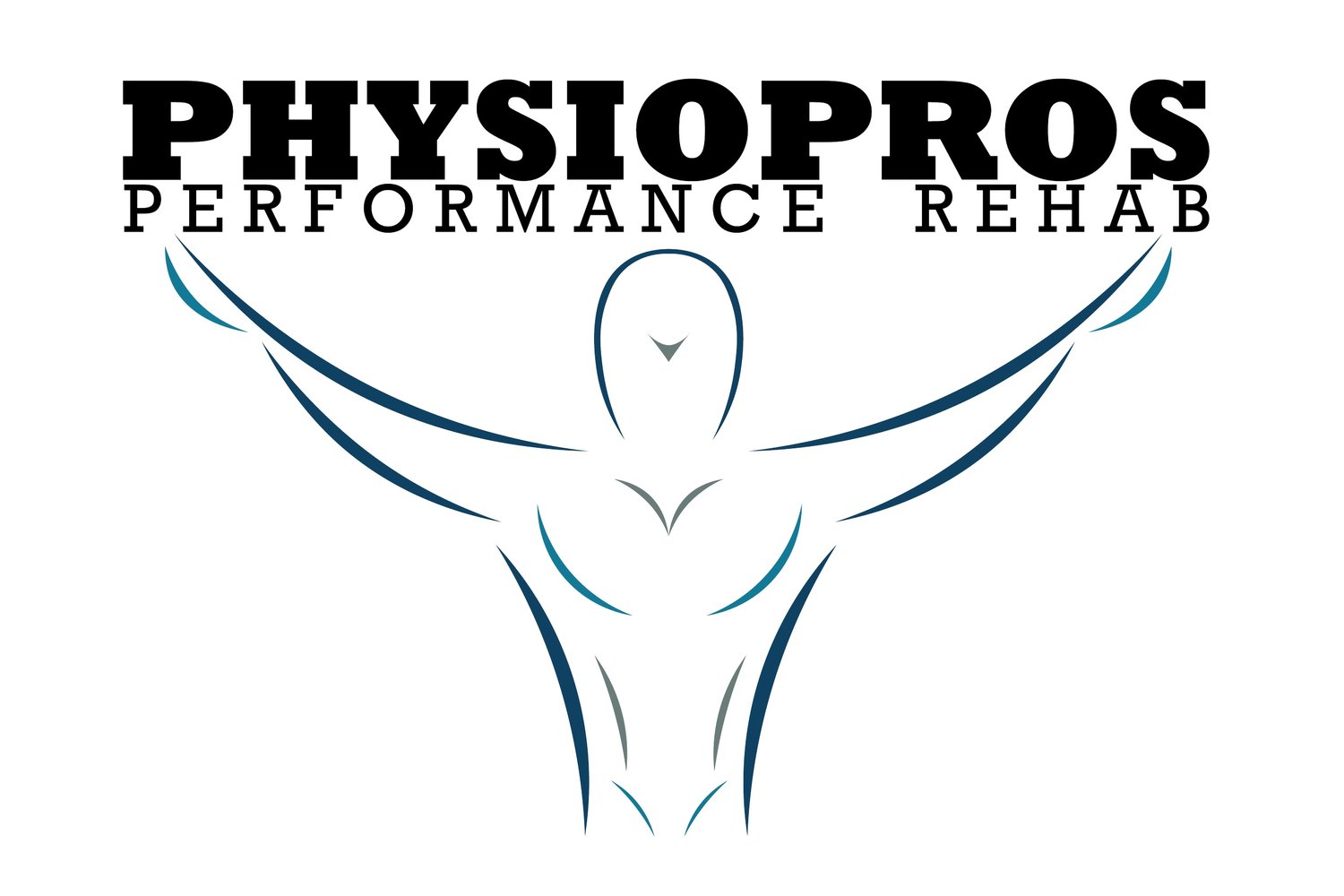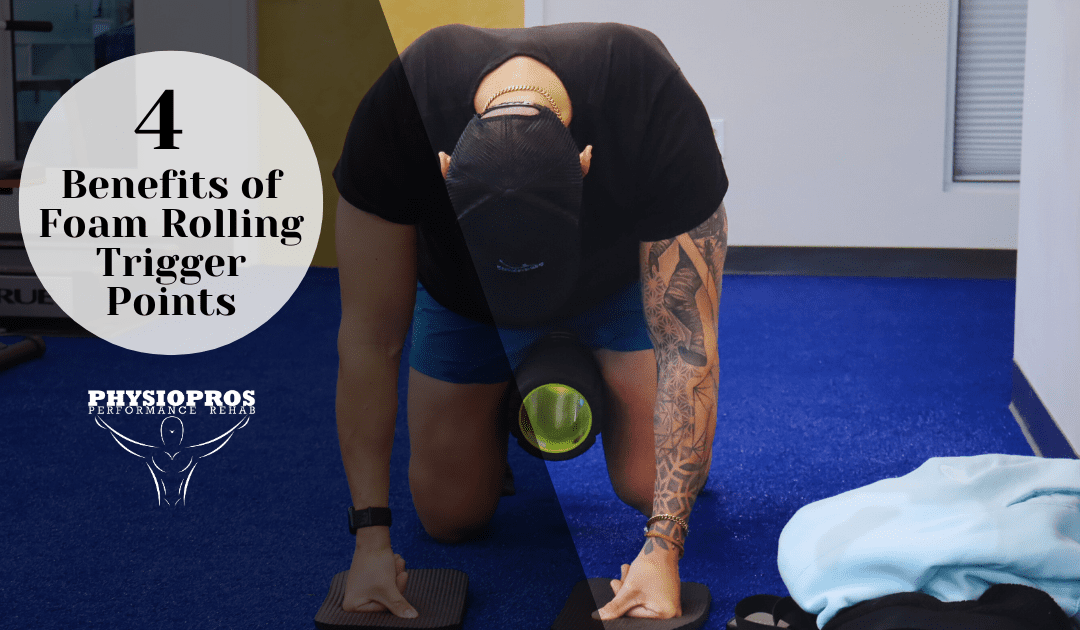Muscle soreness and tight knots slowing you down? Don’t worry, you’re not alone. At Physiopros Performance Rehab, we’ve helped countless people recover faster and feel better with one simple tool: a foam roller.
Foam rolling trigger points—those tight, tender spots in your muscles—can be a game-changer for recovery. By targeting these problem areas, you’ll release tension, boost circulation, and reduce stiffness, making it easier to move and feel your best.
In this post, we’re breaking down the top four benefits of foam rolling trigger points for muscle recovery. Whether you’re a seasoned athlete or just trying to loosen up after a long day, foam rolling is the tool you didn’t know you needed. Let’s get started!
Audio Version:
What Are Trigger Points and Why Should You Care?
Trigger points might sound complicated, but you’ve definitely felt them before. They’re those tight, knotted spots in your muscles that make you wince when pressed—like that tender spot in your shoulder after a long day or the soreness in your calves after a tough run.
So, why do trigger points happen? These knots form when muscle fibers get overworked or stuck in a contracted state, often due to poor posture, repetitive movements, or intense exercise. Left untreated, they don’t just feel uncomfortable—they can lead to stiffness, reduced range of motion, and even lingering pain that slows you down.
This is where foam rolling comes in. By applying targeted pressure, you can release these trigger points, restore your muscles’ natural elasticity, and get them functioning properly again. Whether you’re dealing with workout-related soreness or everyday muscle tension, foam rolling trigger points is a simple and effective solution to keep your body moving pain-free.
4 Benefits of Foam Rolling Trigger Points for Muscle Recovery
Foam rolling isn’t just a trendy fitness hack—it’s a science-backed way to take care of your muscles. Here are four powerful benefits of foam rolling trigger points that can help you recover faster and feel stronger:
Relieves Muscle Tension
Trigger points are like speed bumps for your muscles, creating stiffness and discomfort. Foam rolling helps smooth out those bumps by applying pressure to the tight areas, releasing built-up tension. It’s like giving your muscles a mini deep-tissue massage right where they need it most.
Improves Blood Flow and Circulation
When you roll over a trigger point, you stimulate blood flow to that area. This increased circulation delivers fresh oxygen and nutrients to the muscle while helping flush out waste products like lactic acid. Better blood flow means faster recovery and less soreness after workouts.
Boosts Range of Motion and Flexibility
Tight muscles don’t just hurt—they limit how you move. Foam rolling breaks up adhesions in the muscles and fascia (the connective tissue surrounding your muscles), allowing you to move more freely. Whether you’re trying to improve your squat depth or reach for that yoga pose, foam rolling can help you unlock your body’s full potential.
Reduces Post-Workout Soreness (DOMS)
Delayed onset muscle soreness (DOMS) is the uncomfortable aftermath of an intense workout. Foam rolling can reduce the intensity of DOMS by relaxing tense muscles and improving recovery. The result? Less stiffness and a quicker return to your next workout or activity.
By incorporating foam rolling into your routine, you can treat your trigger points, ease muscle discomfort, and keep your body primed for action. It’s a simple but powerful way to take control of your recovery.
How to Get the Most Out of Foam Rolling
Foam rolling trigger points is straightforward, but a few simple tips can make all the difference in how effective it is for your recovery:
Roll Slowly and Focus on Tender Spots
When you find a tight or sore area, pause and hold the pressure there for 20–30 seconds instead of quickly rolling over it. This allows the muscle to relax and release tension.
Avoid Rolling Over Bones or Joints
Stick to the soft tissue—rolling over bones or joints can cause unnecessary pain and even injury. Focus on the muscles around these areas instead.
Don’t Overdo It
A little foam rolling goes a long way. Spending 30 seconds to 1 minute on each area is usually enough. Too much pressure or rolling for too long can leave muscles feeling bruised or fatigued.
Choose the Right Time to Roll
Foam rolling can be done after workouts to help reduce soreness or on rest days to maintain flexibility. You can also use it in the morning or before a workout as part of your warm-up routine to loosen up tight muscles.
By following these tips, you can maximize the benefits of foam rolling and make it a regular part of your muscle recovery routine.
Choosing the Right Foam Roller
Not all foam rollers are created equal, and finding the right one for your needs can make foam rolling trigger points much more effective. Here’s a quick guide to help you pick the best option:
Smooth Foam Rollers
Perfect for beginners or those with sensitive muscles. These rollers provide even pressure without digging too deep, making them great for easing into foam rolling.
Textured Foam Rollers
Ideal for more targeted relief, these rollers have ridges, bumps, or grooves that mimic the hands of a massage therapist. They’re perfect for breaking up stubborn knots and working on deeper trigger points.
Vibrating Foam Rollers
For those who want to take recovery to the next level, vibrating foam rollers combine pressure and vibration to relax muscles and improve blood flow. They’re especially helpful for athletes or anyone with chronic tension.
Size Matters
Smaller foam rollers or massage balls are great for targeting specific areas like the calves, shoulders, or feet. Larger rollers are better for broad areas like the back or thighs.
The best foam roller is the one that feels comfortable and fits your needs. If you’re new to foam rolling, start with a smooth roller and gradually work your way up to more advanced options as your muscles adapt.
FAQs
Does foam rolling hurt?
Foam rolling can feel uncomfortable, especially if your muscles are tight or you’re rolling over a sensitive trigger point. However, it shouldn’t be unbearably painful. Start with a softer roller or apply less pressure, and gradually work your way up as your body gets used to it.
How often should I foam roll trigger points?
You can foam roll 2–3 times a week or more, depending on your needs. For best results, make it part of your routine after workouts, on rest days, or whenever you feel tightness in your muscles.
Can foam rolling replace stretching?
Not entirely. Foam rolling and stretching work best when used together. Foam rolling helps release trigger points and improve blood flow, while stretching focuses on lengthening and improving flexibility in the muscles.
How long should I spend on each muscle?
Spend 30 seconds to 1 minute on each area, focusing on tender spots. Hold the pressure on tight trigger points rather than rolling too quickly. Avoid spending too much time on a single area to prevent overworking the muscle.
Is foam rolling safe for everyone?
For most people, foam rolling is a safe and effective way to relieve muscle tension. However, if you have an injury, a medical condition, or chronic pain, consult a healthcare professional before starting a foam rolling routine.
Foam rolling trigger points doesn’t have to be complicated. With these tips in mind, you can roll your way to better recovery and improved mobility.
Conclusion
Foam rolling trigger points is one of the easiest and most effective ways to take control of your muscle recovery. By relieving tension, improving blood flow, boosting flexibility, and reducing post-workout soreness, foam rolling can help you move better and feel stronger.
At Physiopros Performance Rehab, we’re all about simple tools that deliver big results, and foam rolling is a perfect example. Whether you’re an athlete pushing your limits or just looking to relieve everyday stiffness, incorporating foam rolling into your routine can make a world of difference.
So, grab a foam roller and give it a try! With a little consistency and the right technique, you’ll be well on your way to healthier, happier muscles. Your body will thank you!
Feel free to reach out to us with any questions or to schedule a consultation. We’re here to guide you every step of the way!
Also, make sure to check us out on Instagram: PhysioprosPT Instagram and Facebook: Physiopros PT Facebook.
Contact us today at (973) 265-8621 or rehab@physioprospt.com—let’s get you rolling toward better recovery!

